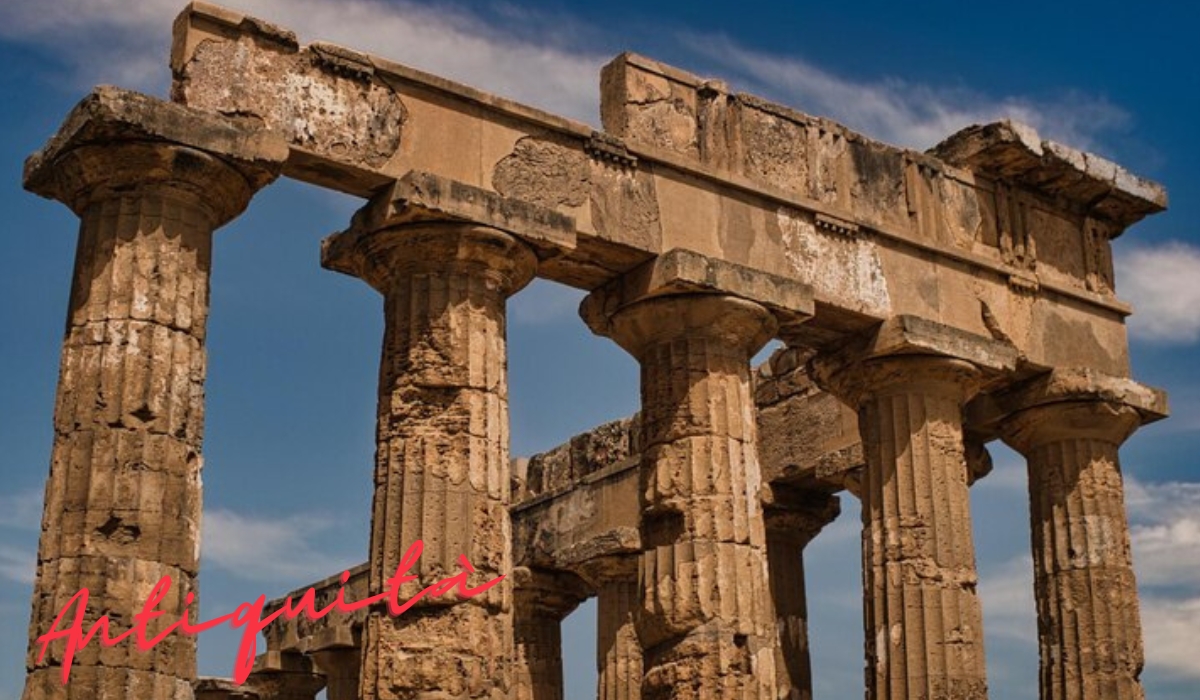General
Antiquità: The Fascinating World of Ancient Civilizations

In the midst of our fast-paced, modern world, the remnants of antiquity stand as silent testaments to the heights of human achievement and the unmistakable imprint ancient civilizations have left on our contemporary lives. From the awe-inspiring pyramids of Egypt to the enigmatic figures etched on the plains of Nazca, ancient cultures continue to captivate our imaginations with their grandeur, mystery, and enduring legacies. This in-depth exploration will take us on a riveting odyssey back to ancient times, unraveling the marvels of civilizations long past and unveiling the profound impact they have on our present-day world.
Ancient Civilizations Overview
To understand where we are today, it’s crucial to look back on the cradles of civilization from which we emerged. Ancient civilizations are characterized by the development of complex societies marked by urban centers, the growth of distinct cultural identities, and the establishment of governing systems. What set these early societies apart were their notable achievements, such as the first examples of written language, monumental architecture, and complex systems of trade and commerce.
Key Characteristics of Ancient Civilizations
The common threads that bound these civilizations were the creation of cities as organizational centers, sophisticated writing systems, monumental infrastructure, and the innovation of agricultural techniques that sustained growing populations. In this era, human life was radically transformed, moving from a nomadic way of life to population centers and eventually creating specialized labor and economies. The social hierarchy and the establishment of laws and governance laid the groundwork for societal structures that echo through time.
Notable Civilizations to Explore
There is a rich tapestry of ancient civilizations that dotted the globe, each with its own unique story. The Nile Valley’s pharaonic culture in Egypt is renowned for its pyramids and monumental works, representing the pinnacle of ancient engineering. The Greeks’ philosophical inquiries and democratic governance laid the framework for modern Western ideologies, while the Roman Empire’s vast influence extended across continents, forging a legacy in law, governance, and engineering.
Meanwhile, the extensive trading networks and city-states of the Mayans, known for their advances in astronomy and mathematics, and the Aztecs, who built the majestic city of Tenochtitlan, provide a glimpse into the urban marvels of pre-Columbian America. The ancient Chinese, with their impressive wall and advances in technology, forged a nation that remains a global titan. These are but a few snapshots of the multitude of ancient societies that have shaped humanity’s narrative.
Achievements and Contributions
The ancients were not only architects of magnificent cities and monuments but also pioneers in realms that continue to define human progress.

Science and Technology
Egyptians’ innovations in architecture with their use of pyramids, tomb structures, and irrigation systems have stood the test of time and continue to impress with their precision. The Mayans’ understanding of celestial movements and their creation of the accurate Mesoamerican calendar attests to a sophisticated comprehension of science. Greeks’ inception of democratic governance and philosophical theories, alongside their architectural and artistic contributions, set the standard for Western thought and society.
Art and Culture
The art of ancient civilizations wasn’t just the product of creative expression; it was a reflection of their identity. From the frescoes of Pompeii to the terracotta army of China, each piece tells a story of religious, societal, and personal significance. Cultural aspects such as rituals, festivities, and storytelling wove the community fabric, uniting individuals under common practices and beliefs.
Cultural Aspects
Peering into the intricacies of daily life in ancient times reveals a mosaic of rituals, beliefs, and social frameworks that are both foreign and familiar. These aspects played a profound role in shaping the identity and unity of these societies.
Religion and Spiritual Practices
Religion was interwoven into the fabric of daily life, often driving the cosmos and societies’ very mechanisms. The temples, tombs, and monuments erected for deities and rulers alike were manifestations of devotion and sought to bridge the chasm between the mundane and the divine. Spiritual practices, like the oracles of Delphi and the pyre works in Mesoamerica, serve as evidence of the ways ancient people sought to interpret and interact with the world beyond the senses.
Daily Life and Traditions
The daily rituals and traditions of various ancient cultures provide us with insights into the human experience throughout millennia. The shared practices of preparing meals, venerating ancestors, and partaking in communal events showcase the commonalities in human existence that transcend time and place.
Architectural Marvels and Artistic Expressions
From the colossal structures of ancient Mesopotamia to the intricate mosaics of the Byzantine Empire, architecture and art were modes of expression that communicated society’s values, achievements, and aspirations. The grandeur of these works endures as a testament to the skill and vision of the ancients.
Legacy and Influence
Despite the gulf of time that separates us, the legacies of ancient civilizations reverberate in our lives today. Their influence can be found in architecture, language, philosophy, and even the very systems that govern us.
Enduring Legacies
The continuity of certain practices and beliefs from ancient cultures is a reflection of their durability and universal resonance. Ideas of justice, ethical behavior, and governance that originated in ancient society persist in the present, serving as cornerstones for our modern legal and political systems.
Shaping Modern Society
The imprint of ancient civilizations on contemporary society is palpable. From the urban planning of ancient Rome that informs modern city layouts to the foundational texts of Greek philosophy that continue to shape intellectual currents, the past is inextricably linked to the present. The study of these cultures not only deepens our understanding of history but also provides a critical lens through which to analyze our current world.
Conclusion
The world of antiquity is an everlasting source of fascination, challenge, and discovery. Travelling through the annals of history, we’ve uncovered the remarkable achievements of ancient civilizations, marveled at their cultural expressions, and contemplated the profound legacies they’ve left behind. This odyssey is not a mere academic exercise but a revealing exploration of the human spirit, its boundless capacity for resilience, and the myriad ways in which the past continues to shape our collective future.
In closing, as we celebrate our rich history, we’re also called upon to continue the quest for understanding and preservation, not just for the scholars and enthusiasts, but for all who yearn to connect with the world that once was. By recognizing the contributions of our forebears, we affirm the timeless truth that underpins the human endeavor: as we learn from the past, we build a stronger, more enlightened future.
This is an invitation to venture further into the depths of antiquity, to engage with the storied chapters of human existence that have beckoned to us across the ages. Whether through scholarly pursuits or the mere appreciation of an artifact’s silent wisdom, the call of the ancient world is one that speaks to the core of our being. It is a call to bear witness, to discover, and to remember that the legacy of antiquity is not just the heritage of a few; it is the collective inheritance of all humanity.
Frequently Asked Questions (FAQs)
- What significant impact did ancient Greek democracy have on modern governance?
Ancient Greek democracy, especially as practiced in Athens, introduced principles such as civic participation, the rule of law, and public debate. Many of these concepts have informed contemporary democratic systems around the globe, offering a foundation for political structures that prioritize the people’s will through elected representation and inclusive legislatures.
- How do spiritual practices of ancient civilizations inform current religions?
Many current religious practices have origins in ancient spirituality, including rituals, sacred texts, and the concept of an afterlife. The mythologies and deified representations in these ancient belief systems often provided the narrative and theological underpinnings for modern religions, substantiating faith frameworks that continue to guide millions today.
- Are there any building techniques from ancient architecture still used today?
Some building methodologies developed by ancient cultures, such as the post-and-lintel system from Egypt and Greece, arches from Rome, and foundational laying techniques practiced by the Incas, continue to influence modern construction. Additionally, the emphasis on symmetry, proportions, and the integration of structures within natural landscapes also continue to inspire contemporary architecture.
- In what ways do ancient art forms continue to influence modern art?
Ancient art forms have a profound impact on modern art; for example, classical themes, styles of sculpture, and the use of perspective initiated in ancient Greece and Rome are reverently echoed in Renaissance art and beyond. Much like their ancient counterparts, modern artists often employ art as a commentary on societal values, spiritual beliefs, and personal experiences.
- How can the study of ancient civilizations benefit society today?
The study of ancient civilizations can provide valuable insights into human behavior, societal development, and cultural interactions. By understanding the roots of contemporary social systems, languages, and ideologies, we can develop a deeper appreciation for our shared heritage. Furthermore, examining the successes and failures of ancient societies may offer
General
Amaziğ: The Rich Woven Artwork of Berber Culture

The Berber people, also known as the Imazighen, have an ancient and enigmatic culture that has withstood the test of time, preserving its unique traditions, language, and art. Among the many forms of artistic expression cherished by the Berbers, Amaziğ weaving stands out as a profound and intricate testament to their creativity and skill. From the deserts of Morocco to the mountains of Algeria, the colorful strands of Amaziğ not only adorn homes but also tell stories and carry the spirit of a people through generations. This rich woven artwork, which has captured the interest of art enthusiasts and cultural explorers worldwide, is far more than just a tapestry; it’s a living document of Berber heritage. In this extensive exploration, we uncover the threads of Amaziğ and the tapestry of Berber culture they unravel.
Historical Origins of Amaziğ
Weaving Through Time
The history of Amaziğ weaving can be traced back centuries, if not millennia. With archaeological evidence suggesting the existence of loom weights and spindles in ancient Berber sites, it is clear that textiles have played an integral role in the Berber way of life since time immemorial. The significance of weaving in Berber society goes beyond utility; it is a form of art that has been intertwined with rituals, ceremonies, and everyday life.
Pride in Pattern
For the Berbers, weaving was not just a craft but also a language, with each pattern, color, and even the direction of the weave conveying a specific meaning. From the early loincloths and shawls to the later complex tapestries and rugs, these weavings were not only utilitarian but also spiritual, serving as amulets, dowries, and bearers of family and tribal identity.
Techniques and Materials
The Craft of the Loom
The traditional methods of Amaziğ weaving are as varied as they are sophisticated. In the rugged landscapes of the Atlas Mountains and the Sahara, Berber women have mastered the art of hand-weaving using techniques passed down within their families. The loom itself, often simple in design, becomes a conduit for the weaver’s expression, allowing complex patterns to emerge with precision and patience.
Strands of Identity
The materials used in Amaziğ weaving are as diverse as the landscapes where Berber tribes have settled. Wool, from the flocks that roam the mountains, is a primary material, providing warmth and a tactile quality that is both rugged and comforting. Dyes are derived from natural sources, such as pomegranate skins, saffron, and indigo, adding a spectrum of colors that reflect the earth and sky of the Berber world.
Symbolism and Designs of Amaziğ
Threads of Meaning
Central to Amaziğ weaving are the patterns and motifs that adorn the textiles. These designs are not haphazard but deliberate, carrying with them a wealth of symbolism. Geometric shapes like diamonds, crosses, and triangles often represent natural elements, celestial bodies, and protective spirits. Each tribe and region has its own unique repertoire of symbols, creating a visual language that is at once personal and communal.
A Tapestry of Culture
The art of the Berber weaver is not one of mere decoration; it is a profound expression of identity and worldview. The intricate designs are filled with references to Berber cosmology, animism, and Islam, all existing harmoniously within the same piece. To gaze upon an Amaziğ weaving is to immerse oneself in the cultural tapestry of the Berbers, to glimpse their history, beliefs, and aspirations.
Contemporary Impact
Preserving Tradition
In the face of modernization and globalization, efforts to preserve the tradition of Amaziğ weaving have taken on renewed importance. Non-profit organizations, cooperatives, and individual artisans are working tirelessly to ensure that the art and techniques of Berber weaving are passed to the next generation. These initiatives not only safeguard a cultural heritage but also provide economic empowerment for Berber women who are often the primary weavers.
Weaving the Future
The influence of Amaziğ weaving has extended beyond the Berber community, finding admirers and collaborators across the globe. Contemporary fashion designers, interior decorators, and artists are looking to the tradition of Berber weaving for inspiration, creating a bridge between the ancient and the avant-garde. This cross-pollination of cultures is not dilutive but adaptive, with Amaziğ crafts taking new forms and finding new audiences while remaining rooted in their cultural context.

Appreciation and Collectibility
The Value of Art
The contemporary art world is waking up to the value of Amaziğ weaving, with collectors and connoisseurs recognizing the singular beauty and richness of these textiles. Fine examples of Amaziğ weavings are sought after for their historical significance, intricate designs, and vibrant colors. From humble village homes to prestigious auction houses, the artistry of Amaziğ weaving is finding its place among the most treasured artifacts of human creativity.
Collecting the Cosmos
For those who appreciate the art and culture behind Amaziğ weaving, collecting these pieces is akin to amassing a gallery of Berber history. Each weaving is unique, a window into a specific time, place, and cultural ethos. Collectors of Amaziğ are not merely accumulating objects; they are gathering a cosmos of stories, traditions, and the shared spirit of the Berber people.
Conclusion
In the art of Amaziğ, we find the essence of Berber culture—colorful, complex, and resilient. The weavings of the Imazighen are more than just artifacts; they are voices from the past, calling out to be heard in the present. They carry with them the warmth of the desert, the purity of the mountain air, and the vibrant tapestry of a people who have lived in harmony with their world for countless ages.
For those who seek to appreciate and support the art of Amaziğ weaving, there are many avenues to engage. Visit the weavers in their mountain villages, where the hum of the loom is a song of continuity and community. Purchase these works of art from reputable sources, ensuring that the legacy of the weavers is honored and their craft fairly compensated. Share the story of Amaziğ weaving, spreading awareness of this beautiful and profound expression of human ingenuity.
The Berber tradition of weaving is not a relic of the past; it is a living, breathing art form that evolves with each new thread. By celebrating and supporting Amaziğ, we become weavers of a different kind, connecting the world to the heritage of the Berber people and ensuring that their vibrant cultural tapestry continues to be woven into the fabric of human appreciation.
General
The Power of Quality: How Reputable Dealers Impact Your Saltwater Fishing Reel Investment

Introduction
In saltwater fishing, the quality of your reel can significantly impact your angling experience and success. However, navigating the vast array of options and ensuring you invest in a high-caliber product can take time and effort. This is where reputable dealers emerge as crucial partners, offering expertise, authenticity, and a commitment to quality that elevates your fishing endeavors.
The Importance of Quality in Saltwater Fishing Reels
Any seasoned angler knows that the quality of saltwater fishing reels can make or break the saltwater fishing experience. The demanding conditions of the open sea mean that reels must withstand corrosive saltwater, intense UV exposure, and the relentless pull of marine gamefish. High-quality reels are designed to excel under these pressures, offering durability, reliability, and fine-tuned performance. But what defines a high-quality reel? It’s not just the materials or price tag but also the expertise backing the product. That’s where reputable dealers come into play.
The Role of Reputable Dealers in Your Investment
A trustworthy dealer’s role extends far beyond the initial transaction of purchasing a fishing reel. They serve as curators of quality, only stocking products that match their standards for excellence. Moreover, they provide authenticity, ensuring the reels they sell are legitimate, high-caliber products rather than counterfeit or inferior models that can flood the market. When investing in a crucial piece of equipment, it is essential to have confidence in the product and the provider.
Enhancing Angling Success with Premium Reels
Investing in premium salt water reels from reputable dealers is more than a luxury—a strategic move toward angling success. These reels typically feature advanced technologies, precision engineering, and unparalleled craftsmanship. Such quality ensures a smoother cast, greater sensitivity to bites, and a more controlled experience when reeling in a tough catch. With a premium reel, anglers have a tool that meets the challenges of saltwater fishing head-on, enhancing their chances of a rewarding catch.
Protecting Your Investment: The Benefits of Buying from Established Dealers
Investing in high-end saltwater reels means you’re not just buying a product but engaging in a relationship with the dealer. Established dealers often provide additional services that preserve the longevity and performance of your gear. These services may include thorough after-sales support, maintenance advice, warranty services, and sometimes trade-in options. By choosing a reputable dealer, you gain access to these benefits, ensuring that your investment is well-protected and that your fishing gear remains in top condition for many seasons.
Why Expertise Matters in Selection and Maintenance
Expertise is invaluable when it comes to selecting and maintaining saltwater fishing reels. Reputable dealers have a deep understanding of the products they offer, enabling them to assist customers in choosing the reel that best suits their fishing style and target species. Furthermore, these experts can provide practical advice on maintaining your reels, from proper cleaning techniques to periodic servicing. This expertise ensures that anglers are equipped with a product and the knowledge to maintain its performance over time.
Understanding the Long-Term Value of Premium Gear
While involving an enormous upfront expenditure, premium fishing gear often exhibits more excellent long-term value. High-end reels are built to last and crafted from superior materials focusing on longevity. The initial cost is mitigated over the product’s lifespan, which requires fewer repairs and will outlast cheaper alternatives. Additionally, a premium reel’s improved performance and reliability can lead to more successful fishing expeditions, with less downtime and fewer lost catches due to equipment failure.
Conclusion
In conclusion, a relationship with a reputable dealer is fundamental to maximizing the benefits of your saltwater fishing reel investment. Quality gear, backed by industry expertise, extends beyond functionality and becomes an integral component of the fishing experience. The right dealer offers services that extend the life of your gear and enhance your overall success on the water. As the angling culture evolves, these dealers become partners in pursuing a sustainable and ethically-minded sport. Therefore, choosing a reputable dealer is not just about purchasing a product but about fostering a connection to a community that values performance, durability, and responsibility in equal measure.
General
Exploring the Intricacies of Käämyäjä: A Step-by-Step Guide-2024

Käämyäjä
In the rich tapestry of Finnish crafts, Käämyäjä stands out as a practice of profound artistry, honed through centuries of tradition and cultural heritage. While the name may not immediately ring bells for those outside the Nordic circle, the craft itself boasts a complexity and timelessness that is truly enchanting. In this comprehensive guide, we will peel back the layers of Käämyäjä, unraveling its history, technique, and application across various mediums, inviting you to join the ranks of those who have mastered this art form.
I. Understanding Käämyäjä
A Brief Historical Background
Käämyäjä is a form of decorative art that originates from Finland and holds a significant place in the country’s cultural heritage. Originating from the Finnish word ‘käärme’, meaning snake, Käämyäjä often incorporates sinuous, serpentine designs that can trace their roots back to ancient civilizations. The process bears a resemblance to coil pottery and is known for the intricate, repetitive patterns that form a cohesive design. Historically, Käämyäjä has been used to adorn wooden household objects, particularly in eastern Finland, often adorning planks or boxes.
Culturally Significant Craft
Käämyäjä is not just an art form; it’s a reflection of life, nature, and heritage. Traditional motifs are inspired by the surroundings — from the rippling waters of Finnish lakes to the twisting branches of snow-laden trees. These designs tell stories, preserve cultural touchstones, and celebrate the intrinsic beauty found in the everyday. In modern times, Käämyäjä continues to be a cherished craft, with practitioners taking inspiration from traditional patterns while infusing their work with personal creativity.
Tools and Materials
Before you can begin your Käämyäjä venture, you need to familiarize yourself with the essential tools and materials. The primary tool is the knife, used not just for cutting but also for intricate carving. For the material, early craftsmen relied on locally-sourced pine and juniper. In contemporary settings, however, Käämyäjä artists have broadened their palette to include a range of woods, fabrics, and even clay. The thread – cue to the art’s coiling technique – can be anything from natural fibers to modern-day polymer.
II. Dissecting Käämyäjä Techniques
Step-by-Step Breakdown of the Käämyäjä Process
Käämyäjä is a methodical art that involves layering coiled strands to produce a raised, textured pattern. The process begins with preparing the material—selecting, cutting, and, in the case of Finland’s cold climate, warming the material to make it pliable. Next, the design is sketched, determining the width and start point for the coil. The artist then applies the coiling technique, securing each round with adhesive, before finishing with potential staining, painting, or varnishing. Precision is key, as any deviation can disrupt the pattern.
Illustrative Examples of Käämyäjä Patterns and Styles
Traditional Käämyäjä patterns often showcase animals, plants, and geometric designs. The ‘käärmekuvio’ or snake pattern is a recurrent motif that symbolizes protection and transition – themes reminiscent of the snake’s shedding of skin. Each pattern is a masterpiece in its own right, showcasing the Käämyäjä artist’s skill and dedication to craft. Modern Käämyäjä has seen a resurgence in abstract and contemporary motifs, inventively experimenting with form and color.
Common Challenges and How to Overcome Them
For beginners, the most common challenge is maintaining consistency in the coiling technique. It can be tedious, but practice is the best mentor. Start with simple, repetitive patterns to get the hang of it. Another hurdle is choosing the right adhesive; it must be strong enough to hold the coil but remain flexible as the pattern takes shape. Tradition uses a mixture of tar and pitch, but contemporary offerings like wood glue and adhesives formulated for fabric work just as well.
III. Distinguishing Käämyäjä on Different Surfaces
Exploring Versatility on Wood, Fabric, and More
One of the most intriguing aspects of Käämyäjä is its adaptability to various surfaces. On wood, it offers a tactile, earthy element. On fabric, it transforms into elaborate embroidery. On paper, it lends an ethereal, papercraft quality. And on ceramic, it speaks to the agelessness of the art form. Each surface demands a different approach, from the cutting and carving to the gluing and sealing.
Showcase of Käämyäjä Artworks on Diverse Surfaces
To truly appreciate the breadth of Käämyäjä, one must witness its application on diverse materials. From wooden bowls and platters to fabric tapestries and clothing, the translation of this art form across mediums is nothing short of magical. It’s in these exploratory avenues that Käämyäjä blossoms into new life, offering fresh perspectives and applications that resonate with contemporary aesthetics.
IV. Answering Common Questions
What Makes Käämyäjä Unique?
Käämyäjä’s distinct approach to coiling and pattern-making sets it apart. The use of natural materials, tools, and inspirations deeply rooted in Finnish culture also contribute to its uniqueness. The art form is a symbol of the intrinsic connection between the artisan and their surroundings, a tangible representation of the Finnish spirit.
Choosing Appropriate Materials for Käämyäjä
The choice of material for Käämyäjä is critical. It must be pliable and durable. Beginners can start with softwoods like pine for ease of manipulation. For fabric, linen provides a good structure. Each material responds differently to the coiling process, requiring adjustments in handling and technique. Experimenting with various materials is key to understanding their unique qualities and working with -instead of against- them.
Modernizing Käämyäjä
The tradition of Käämyäjä is grounded in its historical application, yet it is not bound by it. Modernizing Käämyäjä involves respecting its roots while allowing room for innovation. Contemporary artists are exploring new designs and aesthetics, sometimes integrating Käämyäjä elements with other crafts. The key is to uphold the core principles of the art while pushing its boundaries.
V. Expert Insights and Tips
Learning from Seasoned Practitioners
Seasoned Käämyäjä artists serve as a rich source of knowledge and inspiration. They can offer critical insight on technique, design, and material choice. Seeking mentorship or attending workshops led by these experts can provide a crucial learning experience for novices.
Starting Your Creative Journey
For beginners just starting, the first step is often the most daunting. Begin with simple, smaller projects. These not only build skill but confidence as well. Remember, every intricate pattern began with the first coil; don’t be discouraged by the complexity of others’ works.
Preserving Käämyäjä Traditions
With any craft deeply tied to culture, there is a responsibility to preserve its heritage. Documenting techniques and patterns, teaching others, and finding ways to incorporate Käämyäjä into contemporary contexts are all viable actions. By doing so, we keep the art form alive, ensuring that it doesn’t become static but continues to evolve and inspire future generations.
YOU MAY ALSO LIKE
Exploring the Enigma of Peúgo: A Linguistic Journey
VI. In Closing: The Journey Awaits!
Käämyäjä is more than a craft; it’s an odyssey of creativity and connection. By engaging with this art form, you honor the legacy of the Finns who came before, and you become a steward for the generations that will follow. The creative horizon is vast, and Käämyäjä offers a unique path to those willing to tread upon it.
In this digital age, where speed often trumps precision and instant gratification overshadows the joy of creating, Käämyäjä stands as a testament to the enduring allure of handcrafted art. It beckons, patient and eternal, inviting you to join its tale of coils and curves.
VII. Resources for Further Exploration
The Käämyäjä world is as wide as it is deep, and this guide is but a prologue to your potential adventures within it. Whether it’s online communities dedicated to the craft, curated collections at Finnish museums, or the quiet wisdom of a seasoned Käämyäjä master, there is a wealth of resources to continue your exploration.
Here are some recommended starting points to deepen your understanding and skill in Käämyäjä:
- ‘Käämyäjä: The Art That Bends,’ – An in-depth look at Käämyäjä through the lens of Finnish folklore and cultural history.
- ‘Coiling Traditions of the World’ – A study that contextualizes Käämyäjä among similar coiling traditions from around the globe, shedding light on the art’s universality.
- ‘Finnish Craftsmanship Today’ – A modern observation of Käämyäjä’s place in contemporary Finnish society, touching upon its role in arts and design.
Take these suggestions as guiding stars in your Käämyäjä voyage, but don’t forget that the way forward is yours to chart. The art of Käämyäjä will reward you not just with the beauty of your finished coil, but with the fulfillment of crafting something truly, undeniably yours. And so, with knife in hand and thread at the ready, the art of Käämyäjä awaits your touch.
Frequently Asked Questions
What is Käämyäjä and where does it originate from?
Käämyäjä is a traditional Finnish craft that involves coiling and pattern-making using natural materials. It is deeply rooted in Finnish culture and reflects the connection between the artisans and their natural surroundings. This art form is known for its intricate designs and the use of sustainable materials.
How do I select the right materials for starting Käämyäjä?
When starting with Käämyäjä, choosing the right materials is essential for a successful project. Beginners are recommended to start with softwoods like pine, which are easier to manipulate. For fabric-based projects, linen is preferred for its structure. The choice of material can significantly affect the ease of the coiling process and the final outcome.
Can Käämyäjä be integrated with other crafts?
Yes, Käämyäjä is versatile and can be integrated with other crafts for a more contemporary appeal. Modern practitioners often explore new designs and aesthetics by combining elements of Käämyäjä with other craft traditions, thus pushing the boundaries of what can be achieved while still respecting the core principles of the art form.
Where can I learn more about Käämyäjä?
To deepen your understanding and skills in Käämyäjä, you can explore online communities dedicated to the craft, visit curated collections at Finnish museums, or seek mentorship from seasoned Käämyäjä masters. Additionally, books like ‘Käämyäjä: The Art That Bends,’ and studies such as ‘Coiling Traditions of the World’ provide in-depth insights into the craft.
How can I preserve the tradition of Käämyäjä?
Preserving the tradition of Käämyäjä involves documenting techniques and patterns, teaching others, and finding contemporary applications for the craft. By engaging with Käämyäjä in a way that honors its heritage and encourages innovation, practitioners contribute to keeping the art form vibrant and relevant for future generations.
-

 Technology5 months ago
Technology5 months agoBoosting Customer Engagement Through App Loyalty Programs
-

 Technology7 months ago
Technology7 months agoGeekzilla Podcast: A Remarkable Journey into Geek Culture
-

 Blog6 months ago
Blog6 months agoMaterialistic Princess Spoilers Complete Story 2024
-

 Business6 months ago
Business6 months agoIndexnasdaq: .ixic: Latest Quotes, Charts, and Insights 2024
-

 Technology7 months ago
Technology7 months agoAiyifan: All You Need To Know About It
-

 Technology6 months ago
Technology6 months agoConcept of Coomersu: A Comprehensive Guide
-

 General4 months ago
General4 months agoExploring the Intricacies of Käämyäjä: A Step-by-Step Guide-2024
-

 Technology6 months ago
Technology6 months agoBertėjas: A Deep Dive into the World of Language Translation





















